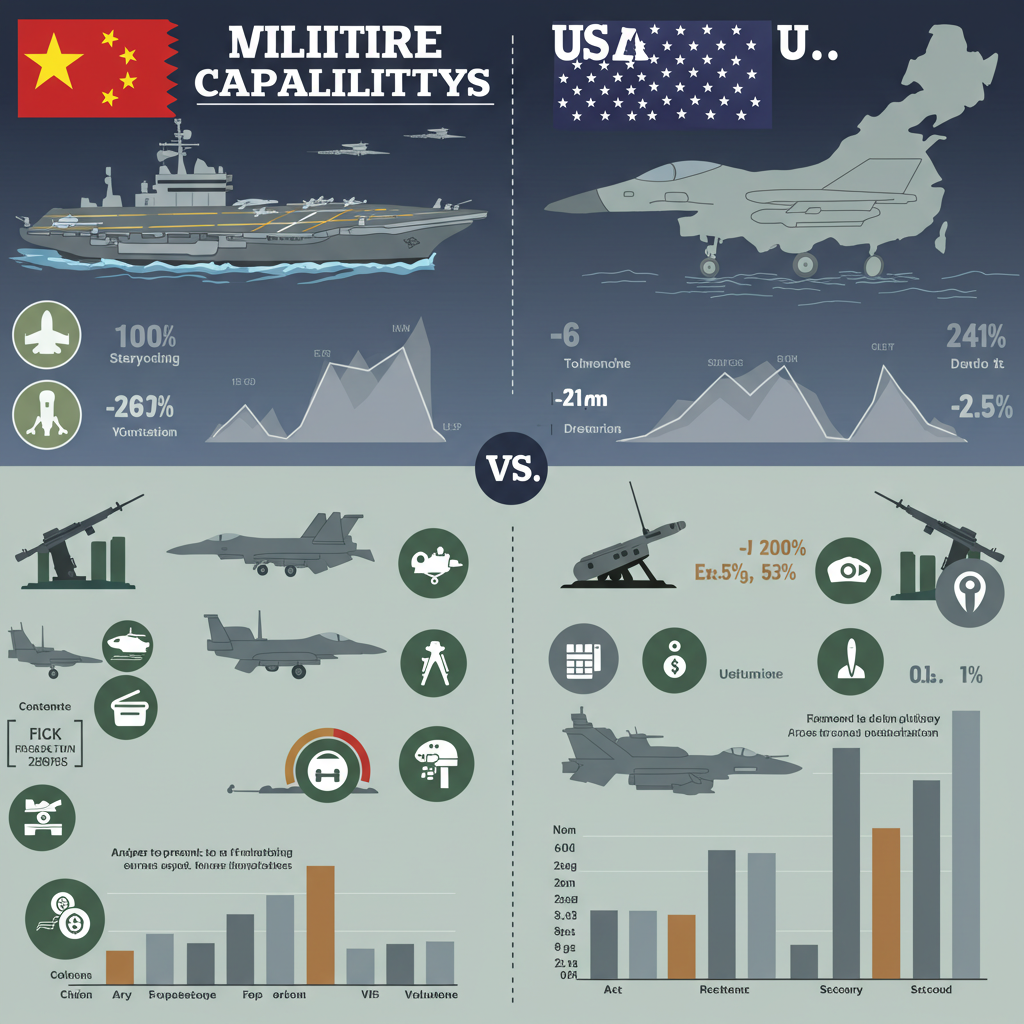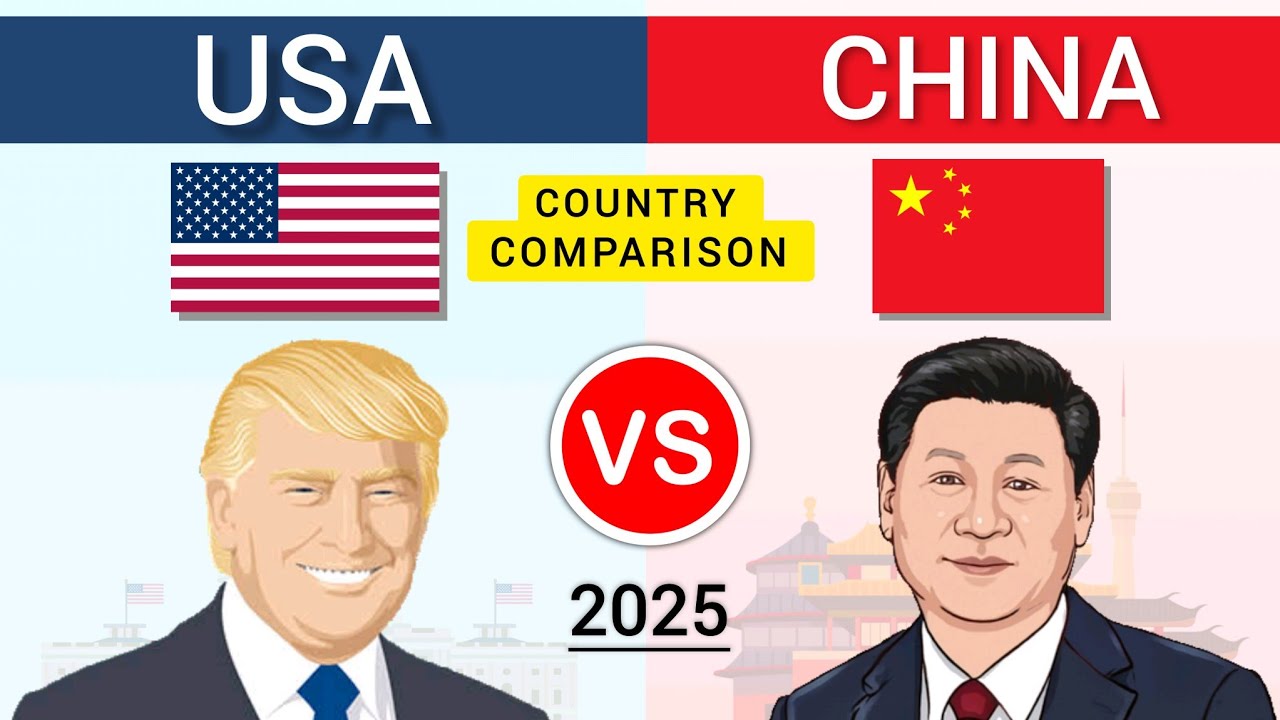Explore a detailed comparison of China and the USA in 2025, covering economy, culture, technology, and more. Discover key insights and trends today.
Introduction
As we move deeper into 2025, the global landscape continues to evolve, with two superpowers—China and the United States—at the forefront of international affairs. This blog post aims to provide a detailed comparison between these two nations across various dimensions, including economy, technology, military, culture, and environmental policies. Understanding the strengths and weaknesses of each country is crucial for grasping their roles in shaping the future of the world.
Economic Landscape
GDP and Economic Growth
As of 2025, China’s economy is projected to be the largest in the world, with a GDP surpassing $20 trillion. The country has maintained a robust growth rate, averaging around 5-6% annually, driven by its manufacturing sector, technological advancements, and expanding domestic consumption. In contrast, the United States, with a GDP of approximately $25 trillion, has seen a more modest growth rate of around 2-3%. The U.S. economy remains highly diversified, with significant contributions from technology, finance, and healthcare sectors.
Trade Relations

Trade continues to be a critical aspect of the relationship between China and the U.S. In 2025, both countries are engaged in a complex web of trade agreements and tariffs. While the U.S. has sought to reduce its trade deficit with China, the latter has increasingly focused on expanding its influence in global markets through initiatives like the Belt and Road Initiative (BRI). This has resulted in both competition and cooperation in various sectors, including technology, agriculture, and manufacturing.
Innovation and Technology
China has made significant strides in technology and innovation, emerging as a leader in areas such as artificial intelligence (AI), 5G telecommunications, and renewable energy. The Chinese government has heavily invested in research and development, fostering a vibrant startup ecosystem. Meanwhile, the U.S. remains home to many of the world’s leading tech companies, including Apple, Google, and Microsoft. Silicon Valley continues to be a hub for innovation, with a strong emphasis on entrepreneurship and venture capital.
Military Strength

Defense Budgets
In 2025, the military capabilities of both countries are formidable. The United States maintains the largest defense budget globally, estimated at around $800 billion, focusing on advanced technology and global military presence. The U.S. military is known for its high-tech equipment, including stealth aircraft, aircraft carriers, and sophisticated missile defense systems.
China, on the other hand, has significantly increased its defense spending, with a budget of approximately $300 billion. The Chinese military, known as the People’s Liberation Army (PLA), has invested heavily in modernizing its forces, focusing on naval expansion and cyber capabilities. The South China Sea remains a focal point of military tension between the two nations, with both asserting their influence in the region.
Global Influence
The geopolitical influence of both countries is evident in their military alliances and partnerships. The U.S. has established strong alliances with NATO and other countries in the Asia-Pacific region, such as Japan and South Korea. In contrast, China has sought to strengthen its relationships with countries in Africa, Latin America, and Asia through military cooperation and economic investments.
Cultural Dimensions
Soft Power
Cultural influence, or soft power, plays a significant role in the global standing of both China and the U.S. The United States has long been a dominant force in global culture, with Hollywood, music, and fashion shaping trends worldwide. American values of democracy and individualism continue to resonate with many people globally.
China, however, has been actively promoting its culture through initiatives such as the Confucius Institutes, which aim to teach Chinese language and culture abroad. The Chinese film industry has also gained traction, producing films that appeal to both domestic and international audiences. As a result, China’s cultural influence is steadily growing, particularly in Asia and Africa.
Education and Research

Education systems in both countries reflect their cultural values and priorities. The U.S. is home to many of the world’s top universities, attracting international students and researchers. American institutions emphasize critical thinking, creativity, and innovation, producing a highly skilled workforce.
China, meanwhile, has made significant investments in education, aiming to improve its global ranking in research and development. The Chinese government has implemented reforms to enhance the quality of higher education and increase the number of graduates in science and technology fields. As a result, Chinese universities are gaining recognition on the global stage.
Environmental Policies
Climate Change Initiatives
In 2025, climate change remains a pressing global issue, and both China and the U.S. have taken steps to address it, albeit with different approaches. The United States has rejoined international agreements like the Paris Accord, committing to reduce greenhouse gas emissions and promote renewable energy sources. The Biden administration has prioritized climate change as a national security issue, pushing for ambitious goals in clean energy and sustainability.
China, as the world’s largest emitter of carbon dioxide, faces significant challenges in balancing economic growth and environmental sustainability. The Chinese government has pledged to achieve carbon neutrality by 2060 and is investing heavily in renewable energy technologies, such as solar and wind power. However, the reliance on coal remains a significant hurdle in meeting these goals.
Environmental Challenges
Both countries face unique environmental challenges. The U.S. grapples with issues such as wildfires, water scarcity, and pollution, particularly in urban areas. In response, many states are implementing stricter environmental regulations and investing in green technologies.
China, on the other hand, faces severe air and water pollution, particularly in industrial regions. The government has launched campaigns to combat pollution and promote sustainable practices, but enforcement remains inconsistent. The country’s rapid urbanization continues to strain natural resources, leading to challenges in waste management and habitat preservation.
Conclusion
The comparison between China and the United States in 2025 reveals a complex interplay of strengths and weaknesses across various dimensions. While China is emerging as a global economic powerhouse with significant technological advancements, the U.S. continues to wield considerable influence through its military capabilities and cultural reach. As both nations navigate their roles on the world stage, the future will likely be shaped by their ability to collaborate and compete in addressing global challenges, from economic disparities to climate change.
Understanding this dynamic relationship is crucial for policymakers, businesses, and individuals alike, as the actions of these two superpowers will undoubtedly have far-reaching implications for the world in the years to come.

